Landscape and rivers
Geographically England comprises the central and southern two-thirds of the island of Great Britain, plus such offshore islands as the Isle of Wight and the Isles of Scilly. It is bordered by two fellow countries of the United Kingdom— to the north by Scotland and to the west by Wales. England is closer to the European Continent than any other part of mainland Britain. It is separated from France by a 34-kilometre (21 mi)[70] sea gap, though the two countries are connected by the Channel Tunnel nearFolkestone.[71][72] As England is on an island, is it surrounded by the water of the Irish Sea, North Seaand Atlantic Ocean. The most important rivers in England, because of their ports of London, Liverpool and Newcastle, are the tidal rivers Thames, Mersey and Tyne.[73] The tides raise the level of water in their estuaries and enable ships to enter the ports. The longest river running through England is theSevern, which is 354 kilometres (220 mi) long and empties into the Bristol Channel; it is also notable for the Severn Bore tidal waves which can reach 2 metres (6.6 ft) in height.[73] However, the longest river entirely in England is the Thames, which is 346 kilometres (215 mi) long.[74] There are many lakes in England but the majority are in the aptly named Lake District; the largest of which is Lake Windermere, it is known by the nickname "Queen of Lakes".[73]
The Pennines which are known as the backbone of England, are the oldest range of mountains in the country originating from the end of the Paleozoic Era around 300 million years ago. The total length of the Pennines is 400 kilometres (250 mi), peaking at Cross Fell in Cumbria.[73] The material which they are made up of itself is mostly sandstone and limestone, but also coal. There are karst landscapes in calcite areas such as parts of Yorkshire and Derbyshire. The Pennines landscape is high moorland in upland areas, indented by fertile valleys of the region's rivers.[73] They contain three national parts, theYorkshire Dales, Northumberland and the Peak District. The highest point in England is Scafell Pike in Cumbria which is 978 metres (3,210 ft) high.[73] Straddling the border between England and Scotland are the Cheviot Hills. The English Lowlands are to the south of the Pennines, consisting of green rolling hills, including the Cotswold Hills, Chiltern Hills, North and South Downs—where they meet the sea they form white rock exposures such as the cliffs of Dover.[73] The granitic Southwest Peninsula in the West Country provides upland moorland, such as Dartmoor and Exmoor, which flourish with a mind climate; both are national parks.[73]
Climate
England has a temperate maritime climate meaning that it is mild with temperatures not much lower than 0 °C (32 °F) in winter and not much higher than 32 °C (90 °F) in summer.[75] The weather is damp relatively frequently and is subject to change. The coldest months are January and February, the latter particularly on the English coast, while July is normally the warmest month. Months with mild to warm weather with least rainfall are May, June, September and October.[75] The biggest influences on the climate of England comes from the proximity to theAtlantic Ocean, its northern latitude and warming of the waters around the Gulf Stream.[75] England receives quite a significant proportion of rainfall during the year, with autumn and winter being the wettest time—geographically the Lake District receives more rain than anywhere else in the country.[75] Since weather recording records began, the highest temperature received was 38.5 °C (101.3 °F) on 10 August 2003 atBrogdale in Kent,[76] while the lowest was −26.1 °C (−15 °F) on 10 January 1982 in Edgmond, Shropshire.[77]
| [hide]Weather averages for England | |||||||||||||
|---|---|---|---|---|---|---|---|---|---|---|---|---|---|
| Month | Jan | Feb | Mar | Apr | May | Jun | Jul | Aug | Sep | Oct | Nov | Dec | Year |
| Average high °C (°F) | 7 (45) | 7 (45) | 9 (48) | 12 (54) | 15 (59) | 18 (64) | 21 (70) | 21 (70) | 18 (64) | 14 (57) | 10 (50) | 7 (45) | 13 (55) |
| Average low °C (°F) | 1 (34) | 1 (34) | 2 (36) | 4 (39) | 6 (43) | 9 (48) | 11 (52) | 11 (52) | 9 (48) | 7 (45) | 4 (39) | 2 (36) | 6 (43) |
| Precipitation mm (inches) | 84 (3.31) | 60 (2.36) | 67 (2.64) | 57 (2.24) | 56 (2.2) | 63 (2.48) | 54 (2.13) | 67 (2.64) | 73 (2.87) | 84 (3.31) | 84 (3.31) | 90 (3.54) | 838 (32.99) |
| Source: Met Office[78] 19 February 2008 | |||||||||||||
Major conurbations
The Greater London Urban Area is by far the largest urban area in England and one of the busiest cities in the world. It has a population larger than other countries in the United Kingdom besides England itself. Other urban areas of considerable size and influence tend to be in northern England or the English Midlands. There are fifty settlements which have been designated city status in England, while the United Kingdom in general has sixty-six. While many cities in England are quite large in size, such as Birmingham, Manchester, Liverpool, Leeds, Newcastle,Bradford, Nottingham and others, a large population is not necessarily a prerequisite for a settlement to be afforded city status. Traditionally the status was afforded to towns with diocesan cathedrals and so there are smaller cities like Ely, Ripon, Truro and Chichester. According to theONS the ten largest, continuous built-up urban areas are;[79]
| Rank | Urban Area | Population | Localities | Major localities |
|---|---|---|---|---|
| 1 | Greater London Urban Area | 8,278,251 | 67 | Croydon, Barnet, Ealing, Bromley |
| 2 | West Midlands Urban Area | 2,284,093 | 22 | Birmingham, Wolverhampton, Dudley, Walsall |
| 3 | Greater Manchester Urban Area | 2,240,230 | 57 | Manchester, Salford, Bolton, Stockport, Oldham |
| 4 | West Yorkshire Urban Area | 1,499,465 | 26 | Leeds, Bradford, Huddersfield, Wakefield |
| 5 | Tyneside | 879,996 | 25 | Newcastle, North Shields, South Shields, Gateshead,Jarrow |
| 6 | Liverpool Urban Area | 816,216 | 8 | Liverpool, St Helens, Bootle, Huyton-with-Roby |
| 7 | Nottingham Urban Area | 666,358 | 15 | Nottingham, Beeston and Stapleford, Carlton, Long Eaton |
| 8 | Sheffield Urban Area | 640,720 | 7 | Sheffield, Rotherham, Chapeltown, Mosborough |
| 9 | Bristol Urban Area | 551,066 | 7 | Bristol, Kingswood, Mangotsfield, Stoke Gifford |
| 10 | Brighton/Worthing/Littlehampton | 461,181 | 10 | Brighton, Worthing, Hove, Littlehampton, Shoreham,Lancing |
Economy
England's economy is the among the largest in in the world, it has an average GDP per capita of £22,907. Usually regarded as a mixed market economy, although it takes on many free marketprinciples compared to the Rhine Capitalism of Europe, England has an advanced social welfare infrastructure. The official currency in England is the pound sterling also known as the GBP.Taxation in England is quite competitive when compared to much of Europe—the basic rate is 20% on taxable income up to £37,400, taxable income over that stands at 40%.[82] The economy of England is the largest part of the British economy; combined with the other countries of the United Kingdom has the 18th highest GDP PPP per capita in the world. One of the world's most industrialised countries, England is a leader in the chemical and pharmaceutical sectors and in key technical industries, particularly aerospace, the arms industry and the manufacturing side of thesoftware industry. At the centre of the financial economy is London which is home to the London Stock Exchange, the main stock exchange in the United Kingdom and the largest in Europe—one hundred of Europe's five hundred largest corporations are based in London.[83] London is the largest financial centre in Europe and currently the largest in the world.[84]
The Bank of England created in 1694 by Scottish banker William Paterson is the central bank of the United Kingdom. Originally created to act as private banker to the Government of England, it carried on in this role as part of the United Kingdom—since 1946 it has been a state-owned institution.[85] The Bank has amonopoly on the issue of banknotes in England and Wales, although not in other parts of the United Kingdom. Its Monetary Policy Committee has devolved responsibility for managing the monetary policy of the country and setting interest rates.[86] England is highly industrialised, but since the 1970s there has been a decline in traditional heavy and manufacturing industries, towards a more service industry dominated economy. Tourism is a significant industry attracting millions of tourists each year. The export part of the economy is dominated by pharmaceuticals, automobiles—though many English created manufacturers are now foreign owned, such as Rolls-Royce, Lotus, Jaguar and Bentley which have headquarters in England, while Aston Martin remains English owned—crude oil and petroleum from the English parts of North Sea Oil along with Wytch Farm, aircraft engines and alcoholic beverages.[87] While agriculture is intensive and highly mechanised, producing 60% of food needs with only 2% of the labour force. Two thirds of production is devoted to livestock, the other to arable crops.
Infrastructure
The Department for Transport is the government institute overseeing transport in England. Since the second half of the 20th century, major road-building programmes were undertaken to facilitate growth in automobile ownership. There are several motorways in England, one of the most important trunk roads is the A1 Great North Road, stretching across the country from London to Newcastle.[88] The longest motorway in England is the M6, stretching from Rugby to the North West up to the Anglo-Scottish border.[88] There are other major roads; the M1 from London to Leeds, the M25 which encircles London, the M60 which encircles Manchester, the M4 from London to South Wales, the M62 from Liverpool to Manchester and East Yorkshire and the M5 from Birmingham to Bristol and the South West.[88] Bus transport across the country is common, major companies include National Express, Arriva and Go-Ahead Group. The red double-decker buses in London have become a symbol of England. There is arapid rail network in two English cities; the London Underground and the Tyne and Wear Metro, the latter in Newcastle, Gateshead and Sunderland.[89] There are tram networks, such as; Blackpool, Manchester Metrolink, Sheffield Supertram and Midland Metro.[89]
Rail transport in England is the oldest in the world, with the system originating there in 1825. Much of Britain's 16,116 kilometres (10,014 mi) of rail network lies in England, covering the country extensively. These lines are mostly single, double or quadruple track, though there are narrow gauge lines. There is rail transport access to France and Belgium through an undersea rail link, the Channel Tunnel which was completed in 1994. There is a wealth of air transport facilities in England connected the public to numerous international locations, the largest airport is London Heathrow Airport which in terms of passenger volume in the busiest in Europe and one of busiest in the world.[90] Other large airports include Manchester Airport,London Stansted Airport, Luton Airport and Birmingham International Airport.[90] By sea there is ferrytransport, both for internal and external trips, some of the most common links are to Ireland, theNetherlands and Belgium.[91] Travel by waterways such as rivers, canals, docks is common with around 7,100 km (4,400 mi) of navigable waterways in England, half of which is owned by British Waterways.[91]The Thames is the major waterway in England, with imports and exports focused at the Port of Tilbury, one of the three major ports in Britain.[91]
The National Health Service (NHS) is the publicly funded healthcare system in England responsible for providing the majority of healthcare in the country. The NHS began on 5 July 1948, putting into effect the provisions of the National Health Service Act 1946. It was based on the findings of the Beveridge Report, prepared by economist and social reformer William Beveridge.[92] The NHS is largely funded from general taxation including National Insurance payments,[93] it provides most services at no additional cost though there are extra charges associated with eye tests, dental care, prescriptions and aspects of personal care.[94] The government department responsible for the NHS is the Department of Health, headed by theSecretary of State for Health, who sits in the British Cabinet. Most of the expenditure of the Department of Health is spent on the NHS—£98.6 billion was spent in 2008-2009.[95] In recent years the private sector has been increasingly used to provide more NHS services despite opposition by doctors and trade unions.[96] The average life expectancy of people in England is 77.5 years for males and 81.7 years for females, the highest of the four countries of the United Kingdom.[97]
Demography
Population
With over 51 million inhabitants, England is the most populous country of the United Kingdom, accounting for 84% of the combined total.[98] England taken as a unit and measured against international states has the fourth largest population in the European Union and would be the 25th largest country by population in the world.[99] With a density of 395 people per square kilometre, it would be the second most densely populated country in the European Union after Malta.[100] Beyond Europe, England ranks third in population density afterBangladesh and South Korea.[101] The five largest urban areas in England are Greater London, the West Midlands, Greater Manchester, West Yorkshire and Tyneside.[102] The English people are a British people[3]—genetic evidence suggests that 75–95% descend in the paternal line from prehistoric settlers who originally came from the Iberian Peninsula.[103][104][105] There is a significant Norse element, as well as a 5% contribution from Angles and Saxons,[103] though some scholars place this estimate higher.[106] Recent genetic studies have shown that more than 50% of England's gene pool contains Germanic Y chromosomes.[107] Over time various cultures have been influential—Prehistoric, Brythonic,[108] Roman, Angle, Saxon,[109] Norse Viking,[110] Gaelic cultures, as well as a large influence from Normans. There is an English diaspora in former parts of the British Empire; especially the United States, Canada, Australia, Chile, South Africa and New Zealand.[note 3] Since the late 1990s, English people have migrated to Spain.[115][116]
At the time of the Domesday Book, compiled in 1086, more than 90% of the English population of about two million lived in the countryside.[117] By 1801 the population had grown to 8.3 million, and by 1901 had grown to 30.5 million.[118] Industrial and commercial expansion in the late 18th, 19th and early 20th centuries, and growing ease of communications, fuelled migration between all parts of British Isles. Due to the economic prosperity in South East England there are many economic migrants from the other parts of the United Kingdom.[3] There has been significant Irish migration, with 25% of English people having Irishancestry.[119] The white population totals out at 89.90%, including Germans[119] and Poles.[3] Outside of this people from much further afield in the former British colonies have arrived since the 1950s—5.30% of people living in England have migrated from the Indian subcontinent, mostly India and Pakistan.[3][119]2.30% of the population are black, mostly from the Caribbean.[3][119] There is a significant number ofChinese and British Chinese.[3][119] As of 2007, 22% of primary school children and 17.7% of children at secondary school in England were from ethnic minority families.[120]
About half of population increase between 1991–2001 was due to foreign-born immigration. During the period 1991–2001 a net 726,000 immigrants arrived in London.[121] Debate over immigration is politically prominent,[122] according to a Home Office poll 80% of people want to cap it.[123] The Office for National Statistics has projected a continuing growth in the population, estimating between the years 2004–2029 a six million figure growth.[124] A projected increase of more than 20% by 2029.[124]
Language
As its name suggests, the English language, today spoken by hundreds of millions of people around the world, originated as the language of England, where it remains the principal tongue today, although not officially designated as such. An Indo-European language in the Anglo-Frisian branch of the Germanicfamily, it is closely related to Scots.[125] After the Norman conquest, the Old English language was displaced and confined to the lower social classes as Norman French and Latin were used by the aristocracy. By the 17th century, English came back into fashion among all classes, though much changed; the Middle English form showed many signs of French influence, both in vocabulary and spelling. During the English Renaissance, many words were coined from Latin and Greek origins;[126]Modern English has extended this custom of flexibility.
It is most commonly accepted that—thanks in large part to the British Empire—the English language is now the world's unofficial lingua franca.[127] English language learning and teaching is an important economic sector, including language schools, tourism spending, and publishing houses. There is no United Kingdom legislation in respect of language use within England,[128] but English is the only language used in England for general official business. Despite the relatively small size of the nation, there are many distinct English regional accents. Those with particularly strong accents may not be easily understood elsewhere in the country. Revivalists and enthusiasts have attempted to revive extinct Brythonic languages such as Cornish as a second or third tongue, in the county of Cornwall 0.1%[129] have the ability to speak the modern reconstruction which uses Welsh and Breton.[130] It is supported by the government under the ECRM, yet the United Nations has placed it on a list as extinct.[131]
Education
Universities and learning institutions
The body responsible for state education in general up to the age of 19, in the United Kingdom is theDepartment for Children, Schools and Families—this body directly controls state schools in England.[132]Funded through taxation state-run schools are attended by approximately 93% of English schoolchildren. There are a minority of faith schools, mostly Church of England or Catholic Church ran. Between three and four is nursery school, four and ten is primary school and then ten to sixteen is secondary school with an option for a two year extension to attend sixth form college. Although most English secondary schools arecomprehensive, there are selective intake grammar schools which can be entered by passing the eleven plus exam. Around 7% of English schoolchildren attend private schools which are funded by private sources. Standards are monitored by regular inspections of state-funded schools by the Office for Standards in Education and of private schools by the Independent Schools Inspectorate.[133]
After finishing compulsory education, pupils take a GCSE examination. Following this people may decide to continue with further education and attend a further education college. Students normally enter University from 18 onwards and study for an Academic Degree. There are more than 90 state funded universities in England which are monitored by the Department for Innovation, Universities and Skills, students are generally entitled to student loans for maintenance.[note 5] The first degree offered to undergraduates is the Bachelor's degree, taking three years. Students are then eligible for a postgraduate degree which includes the Master's degree, taking one year and Doctorate degree taking three. England has a strong history of promoting education and its top institutions enjoy a respected reputation internationally. Perhaps the best know universities are Oxford University and Cambridge University. The King's School, Canterbury and The King's School, Rochester are the oldest schools in the English speaking world.[134] The most famous schools in England are now fee-paying institutions, includingWinchester College, Eton College, St Paul's School, Rugby School and Harrow School.[135]
Science, engineering and innovation
Prominent English figures from the field of science and mathematics include Sir Isaac Newton, Michael Faraday,Robert Hooke, Robert Boyle, Joseph Priestley, J. J. Thomson, Charles Babbage, Charles Darwin, Stephen Hawking, Christopher Wren, Alan Turing, Francis Crick, Joseph Lister, Tim Berners-Lee, Andrew Wiles andRichard Dawkins. Experts claim that the earliest concept of a Metric system was invented by John Wilkins, first secretary of the Royal Society in 1668.[136] As birthplace of the Industrial Revolution, England was home to many significant inventors during the late 18th and early 19th century. Famous English engineers includeIsambard Kingdom Brunel, best known for the creation of the Great Western Railway, a series of famoussteamships, and numerous important bridges, hence revolutionising public transport and modern-day engineering.[137]
Inventions and discoveries of the English include; the first industrial spinning machine, the first computer and the modern computer, the World Wide Web along with HTTP and HTML, performance of the first blood transfusion, the vacuum cleaner, the lawnmower, the seat belt, the hovercraft, the electric motor, the microphone and steam engines. Theories such as the Darwinian theory of evolution and the atomic theory.[138] Newton was the promulgator of universal gravitation, Newtonian mechanics and infinitesimal calculus, while Robert Hookepromulgator the Hooke's law of elasticity. Other inventions include the iron plate railway, the thermosiphon, tarmac, the rubber band, themousetrap, "cat's eye" road safety device, joint development of the light bulb, steam locomotives, the seed drill, the jet engine and many modern techniques and technologies used in precision engineering.[138]
Religion
Christianity is the most widely practiced religion in England and has been since the Early Middle Ages, though its existence on the island dates back to the Gaelic and Roman introduction in antiquity and continued throughEarly Insular Christianity. Around 71.6% of English people identify as Christians.[139] The largest form practiced in the present day is Anglicanism, dating from the 16th century Reformation period, with the 1536 split from Rome over Henry VIII wanting to divorce Catherine of Aragon, the religion regards itself as both Catholic andReformed. There are both High Church and Low Church traditions, with a portion of Anglicans regarding themselves as Anglo-Catholics after the Tractarian movement. Head of the Church is the monarch of the United Kingdom as the Supreme Governor. It has the status of established church in England. There are around 26 million adherents to the Church of England and they form part of the Anglican Communion with theArchbishop of Canterbury acting as the symbolic worldwide head.[140] Many cathedrals and parish churches are historic buildings of significant architectural importance, such as Westminster Abbey, York Minster, Durham Cathedral and Salisbury Cathedral.
The second largest Christian practice is the Latin Rite of the Catholic Churchwhich traces its formal, corporate history in England to the 6th century with Augustine's mission and was the main religion on the entire island for around a thousand years. Since its reintroduction after the Catholic Emancipation, the Church has organised ecclesiastically on an England and Wales basis where there are 4.5 million members (most of whom are English).[141] There has been one Pope from England to date, Adrian IV; while saints Bede and Anslem are regarded as Doctors of the Church. A form of Protestantism known asMethodism is the third largest and grew out of Anglicanism through John Wesley.[142] It gained popularity in themill towns of Lancashire and Yorkshire, and amongst tin miners in Cornwall.[143] There are other non-conformistminorities, such as Baptists, Quakers, Congregationalists, Unitarians and the Salvation Army.[144]
The patron saint of England is Saint George, he is represented in the national flag, as well as the Union Flag as part of a combination.[145][145] There are many other English and associated saints, some of the best known include; Cuthbert, Alban, Wilfrid, Aidan, Edward the Confessor, John Fisher, Thomas More, Petroc, Piran,Margaret Clitherow and Thomas Becket.[146] There are non-Christian religions practiced. Jews have a history of a small minority on the island since 1070.[147] They were expelled from England in 1290 following the Edict of Expulsion, only to be allowed back in 1656.[147] Especially since the 1950s Eastern religions from the former British colonies have began to appear, due to foreign immigration; Islam is the most common of these accounting for around 3.1% in England.[139] Hinduism, Sikhism and Buddhism are next in number adding up to 2% combined,[139]introduced from India and South East Asia.[139] Prior to the rise of Christianity—Celtic, Roman and Anglo-Saxon polytheism was practiced. Around 14.6% claim to have no religion.[139]
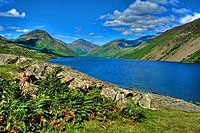
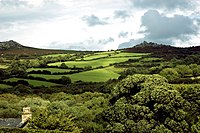
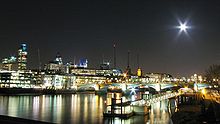






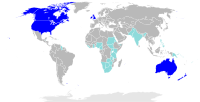

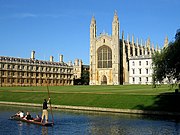






0 comments:
Post a Comment